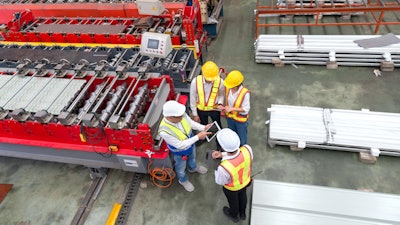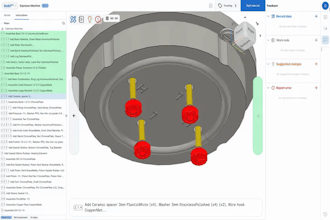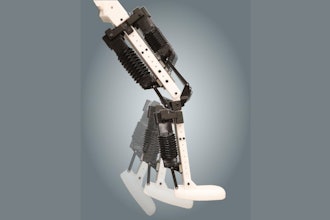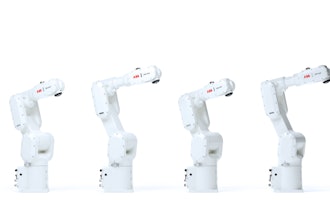
The U.S. manufacturing sector is operating in a state of tension: demand remains high, but the workforce needed to meet that demand is dwindling. Nearly 400,000 factory jobs remain unfilled across the country. Retirements among experienced workers, a shrinking pool of younger talent, and changing attitudes toward career stability are converging into one persistent challenge: keeping operations running without enough people to do the work.
Many manufacturers, especially those in the small to mid-sized range, have reached a tipping point. With labor increasingly challenging to secure, the question has become less about recruitment and more about rethinking how work gets done. Streamlining processes through automation has become a go-to move for manufacturers navigating workforce constraints.
Automation Beyond the Factory Floor
When most people think of manufacturing automation, robotics on the production line comes to mind. While that form of automation plays a vital role in high-volume operations, it's often out of reach for smaller firms due to cost, complexity, and implementation time. In reality, many of the most significant efficiency and immediate ROI gains can be found far from the assembly line, in the back office.
Business operations workflows related to procurement, quality control, engineering change orders, supplier onboarding, and compliance remain heavily reliant on manual steps to manage large volumes of information, documentation, and review and approval processes. Printed documents are emailed or even physically delivered for signatures. Spreadsheets are used to track various import and export tasks. Emails are sent and resent to keep a project moving. Those office inefficiencies add up quickly.
This is where process automation proves its value. By simplifying and digitizing everyday tasks, manufacturers are uncovering ways to stretch their current workforce further. Things like routing contracts, handling invoice approvals, or logging nonconformance issues no longer have to eat up hours. When those repetitive steps run automatically, teams have more time to concentrate on the work that really moves the business forward.
Closing Gaps Without Adding Headcount
For companies experiencing steady growth without a matching increase in workforce, automation helps maintain momentum. Organizations that previously relied on institutional memory and informal handoffs are building more resilient workflows that can scale.
Rather than adding employees to keep up with higher order demands, manufacturers are using automation to route forms, track progress, and enforce standard operating procedures. This becomes especially useful for teams spread across different sites or shifts. A review started by one manager can be picked up by another person hours later with no confusion or waiting. By cutting out repetitive steps and reducing the chance of human error, this approach keeps operations running smoothly while still making it easy to see who’s handled what along the way.
Automation is also valuable even for organizations that are fully staffed with highly effective employees, because improving processes and scaling employee output is crucial for staying competitive in today’s manufacturing environment.
Practical Applications of Generative AI
There’s no shortage of talk about artificial intelligence in manufacturing, but much of it remains aspirational. While some enterprise-level manufacturers are experimenting with AI-driven analytics and machine learning for predictive maintenance, most small and mid-sized firms are looking for simpler, more immediate applications.
Generative AI is making inroads in areas like document classification, data capture, and workflow routing. Instead of relying on manual input, these tools can now recognize what kind of file is being handled (for example, distinguishing a purchase order from a quality report) and then pull out the relevant details and send it along to the right person.
By cutting down on repetitive document search and tracking, data entry and standardizing how information flows between teams, this kind of support helps keep processes moving smoothly and reduces the chance of delays or errors. Importantly, it integrates into existing systems rather than requiring a complete overhaul. That makes it a more realistic entry point for organizations just beginning their automation journey.
Compliance and Documentation: Getting It Right the First Time
Keeping clear records has always been essential in manufacturing, whether it's for International Organization for Standardization (ISO) certification, regulatory inspections, or internal quality checks, because teams need to be able to trace what happened, when it happened, and who signed off. Still, in many organizations, compliance documents are scattered across inboxes, shared drives, and even old filing cabinets, making it harder to stay organized and audit-ready.
That patchwork approach makes it harder to stay organized and increases the risk of errors or missing records, especially when teams are already short on time. By automating key parts of the documentation process, manufacturers can create a much tighter system of control. That includes automatic version tracking, role-based access, and clear audit trails that show the full history of every document.
Industries with strict oversight, like defense, aerospace, or nuclear energy, depend on this level of rigor. But even outside of those spaces, bringing more order and transparency to documentation tends to reduce delays, support better decision-making, and make life easier for everyone involved.
Building a Scalable Foundation
While the term “digital transformation” can sound lofty, it often starts with one simple change. Automating a single, high-friction process, like supplier onboarding or engineering change approvals, can demonstrate clear value and create momentum for broader adoption.
Many manufacturers begin with just one department, identify key pain points, and implement a low-code automation solution that complements their existing ERP or MES. From there, success stories multiply. Cross-departmental workflows become easier to manage. Data silos begin to dissolve. By reducing the pressure of repetitive, low-value tasks, employees can focus on problem-solving, innovation, and relationship-building with suppliers and customers. In a labor market where burnout is a genuine concern, that shift matters.
A New Approach to Efficiency Amid Labor Shortages
Labor shortages in manufacturing aren’t a passing phase; they’re becoming part of the landscape. While investing in training programs and education partnerships is important for the future, companies still need solutions that help them stay productive right now. Automating routine processes, especially those that eat up time behind the scenes, can ease the load on smaller teams. With the right systems in place, it’s possible to maintain output and meet demand, even without a full roster of staff. In an industry built on precision, repeatability, and efficiency, that’s a critical competitive advantage.
Grace Nam is the Strategic Solutions Manager for Laserfiche.






















